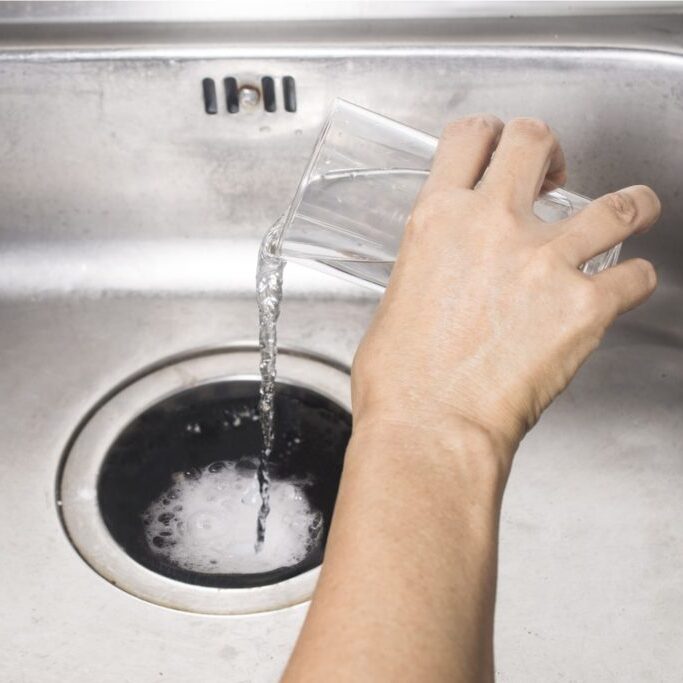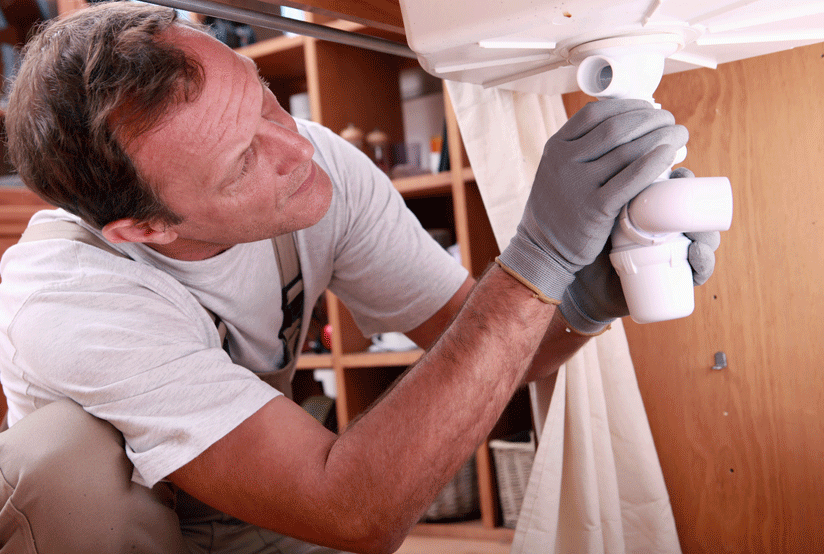Quick Ways To Resolve A Slow-Draining Sink
Quick Ways To Resolve A Slow-Draining Sink
Blog Article
What are your ideas on Solved! How to Fix a Slow Sink Drain?

Introduction
We've all been there: You're brushing your teeth or cleaning your hands, and you discover the water pooling in the sink. As opposed to quickly swirling away, it sticks around, turning your once-refreshing morning routine right into a miniature overload scene. A slow-draining sink isn't just bothersome; it's frequently a sign of larger plumbing concerns hiding below the surface area. The good news is that a lot of slow-draining sinks can be fixed with a little knowledge, a couple of basic devices, and some perseverance. Ready to tackle this project head-on? Allow's roll up our sleeves and dive right in.
Comprehending the Sources Of a Slow-Draining Sink
Before you begin poking around in your pipes, it assists to recognize what might be causing the downturn. Comprehending the origin makes it much easier to select the best repair.
Usual Culprits Behind Slow Drainage
So, what's clogging points up? Typically, it's a mixture of day-to-day debris-- think hair, soap scum, toothpaste residue, and remaining food bits. Gradually, these little bits collect and cling to the pipe wall surfaces, progressively narrowing the passage and making it harder for water to travel through. In many cases, mineral deposits from tough water can likewise add to the crud, developing the ideal storm for persistent blockages.
When is it Time to Do Something About It?
If you observe the water draining pipes slower than normal, it's a good idea to interfere quicker instead of later. Waiting too long might result in finish blockages, undesirable smells, or even pipe damages. If the water takes greater than a couple of secs to clear out after switching off the tap, consider it a warning and prepare yourself to put on your DIY hat.
Tools and Materials You'll Require
The right devices make all the distinction. Thankfully, you won't need a fully stocked plumbing professional's van to finish the job.
Important Devices for Do It Yourself Repair Works
A plunger is your best starting factor. A tiny, sink-sized bettor develops suction that can remove minor blockages. For more persistent clogs, a drain serpent (in some cases called a plumbing's auger) works wonders. A set of handwear covers, a flashlight, and possibly a set of protective safety glasses are also useful.
Suggested Cleaning Solutions
Moderate recipe soap and hot water can aid break down greasy build-up. A combination of baking soft drink and vinegar is a tried and true home remedy, and enzymatic cleansers use an even more eco-friendly method. Maintain chemical drainpipe cleansers as a last hope, as they can be severe on your pipes.
Safety First: Safety Measures and Preparations
Before you launch into unclogging setting, think of security. You're dealing with potentially dirty water and debris, so slip on a pair of gloves. If you're utilizing chemical cleaners, make certain the area is well-ventilated and follow the directions on the tag.
Protective Gear and Workspace Arrangement
Lay down some old towels or rags around the sink area to capture sprinkles. Eliminate any kind of products that might enter your method, like soap dispensers or tooth brush holders. Make sure you have excellent illumination-- get a flashlight if required.
Step-by-Step Overview to Dealing With a Slow-Draining Sink
Now, let's get involved in the nitty-gritty. This detailed process will certainly assist you with easy techniques to recover your sink's drainage.
Step 1: Get Rid Of and Tidy the Stopper
Commonly, the stopper (that small plug you push down to obstruct water) is the initial culprit. Remove it very carefully and wipe any hair or gunk caught around its base. Rinse it thoroughly before putting it back in position.
Action 2: Make Use Of a Plunger to Remove Debris
Got that bettor ready? Placement it over the drain and give it a few firm pumps. The idea is to produce suction that can loosen up any type of obstruction. If you see little bits of particles floating up, you're on the right track.
Action 3: Try a Drainpipe Snake or Wire Hanger
If the bettor does not suffice, it's time to bring out the drain snake. Delicately feed it right into the drain and twist as you go. You might feel some resistance-- that's likely the blockage. Maintain turning and pulling till you eliminate the obstruction. If you do not have a drain snake, a straightened cord hanger can work in a pinch.
Tip 4: Apply a Do It Yourself Drainpipe Cleaner
An all-natural cleaner made from baking soft drink and vinegar can break down residual gunk. Pour half a mug of cooking soda right into the drainpipe, complied with by half a cup of vinegar. Let it fizz for around 15 mins, then flush with hot water. This chain reaction often does wonders for minor obstructions.
Step 5: Reconstruct and Test the Sink
Placed everything back together and run the faucet. Does the water now swirl down the drain at a reputable speed? If yes, offer on your own a pat on the back. Otherwise, don't anguish-- there are still a couple of more dress up your sleeve.
Alternative Approaches for Stubborn Clogs
Not all clogs are developed equal. If your sink still declines to work together, think about these different services.
Sodium Bicarbonate and Vinegar Method
We currently discussed this, but it deserves keeping in mind once again. This gentle, environmentally friendly approach is much safer than chemical cleansers and usually rather reliable.
Enzymatic Drainpipe Cleaners
Enzyme-based cleaners make use of natural germs to absorb raw material. They're an excellent choice if you're wanting to prevent severe chemicals. Just remember, they might take a bit longer to work their magic.
Chemical Drain Cleaning Company: Advantages And Disadvantages
Chemical cleaners can blow up with challenging blockages quickly, however they're not without downsides. They can generate warm and fumes, damages pipelines if utilized excessively, and position environmental risks. Utilize them moderately, and always comply with the instructions very carefully.
Preventive Measures to Maintain Your Sink Flowing
Prevention is the very best cure. By taking on a few basic habits, you can maintain your sink from reducing in the first place.
Regular Cleaning Habits
Wipe down the sink container and component location routinely. Remove hair or food fragments before they have an opportunity to wash down the drainpipe.
Staying Clear Of Unsafe Compounds Down The Tubes
Think twice prior to discarding coffee grounds, oil, or fibrous vegetable scraps down the sink. These wrongdoers cling to pipe wall surfaces, producing blockages over time.
Routine Maintenance Checks
Set up a quick monthly evaluation. Run warm water via the sink for a few mins, taking note of the flow. If it appears slow-moving, act quick prior to it becomes a full-blown clog.
When to Call an Expert Plumbing
Often, despite just how hard you try, that obstruct simply won't budge. That's when it's time to generate the pros.
Signs That Indicate a More Serious Issue
If your sink drains slowly regardless of numerous attempts, or if you discover water backing up in various other components (like your shower or commode), you might have a much more serious plumbing problem hiding much deeper in the system.
Balancing Do It Yourself Efforts with Specialist Assistance
While do it yourself can save you money and use a sense of success, there's no shame in calling a professional. An expert plumbing can analyze your entire plumbing setup, guaranteeing there's no underlying damages or long-term issue that can cost you more in the future.
Contrasting Prices and Long-Term Solutions
Before choosing, take into consideration the big picture. An economical, quick fix may address the issue briefly, yet purchasing a much more long-term solution can save you cash and stress and anxiety in the long run.
Considering the Costs of DIY vs. Professional Fixes
Do it yourself fixes typically cost little greater than the cost of a bettor or a bottle of baking soft drink. Expert services, on the other hand, featured a price but might prevent repeated concerns and pricey repair services later on.
Buying Quality Fixtures and Upgrades
If your sink's style contributes to regular obstructions, it could be worth updating to higher-quality components or altering the pipes format. Consider this a financial investment in your house's capability and convenience.
Verdict
A slow-draining sink can seem like a minor irritation, however it's frequently an indication that your pipes needs a little TLC. By recognizing the origin, utilizing the right devices and techniques, and committing to straightforward preventive measures, you can maintain your sink moving openly. And when all else fails, never ever hesitate to call in a specialist-- your home's pipes deserves the investment in care and upkeep.
Three Common Ways to Fix a Slow Drain
Baking Soda Method
Boil a full pot of water. Measure out cup of baking soda and pour it down the drain. Then take cup of the magical cleansing substance known as white vinegar and drop that down there too. Allow the mixture to fizz in the drain for five minutes as the vinegar and baking soda combine. Now dump in that whole pot of boiling water. This combination of cleaning substances should clear out anything that is causing your sink to drain slowly. If it doesn t...
Zip-It
If the baking soda method doesn t clear out your drain, it may be because a significant amount of hair and/or other debris has collected there and you need to remove it. Purchase a Zip-It tool at any home improvement or hardware store and insert it into your drain. It will catch any collected hair or debris that s blocking the flow of water. Pull it out. If it s got a big clump of hair, etc. on the end, you ve probably got your culprit.
Drain Cleaner
If these methods don t work, there is the standard drain cleaner that you can also buy in a hardware store or even your local grocery store. It s better if you can use a household solution, but these drain cleaners often work in a pinch. They re very simple to use. You generally just dump them in your drain and wait. If even this method is not effective, it may be time to call the plumber.
https://www.mrrooter.com/oneida/about-us/blog/2017/july/three-common-ways-to-fix-a-slow-drain/

I hope you liked our topic on 4 Tips to Fix a Slow Draining Sink. Thanks for taking time to browse our content. If you please take the time to share this article if you appreciated it. Thanks so much for going through it.
Book Your Installation Report this page